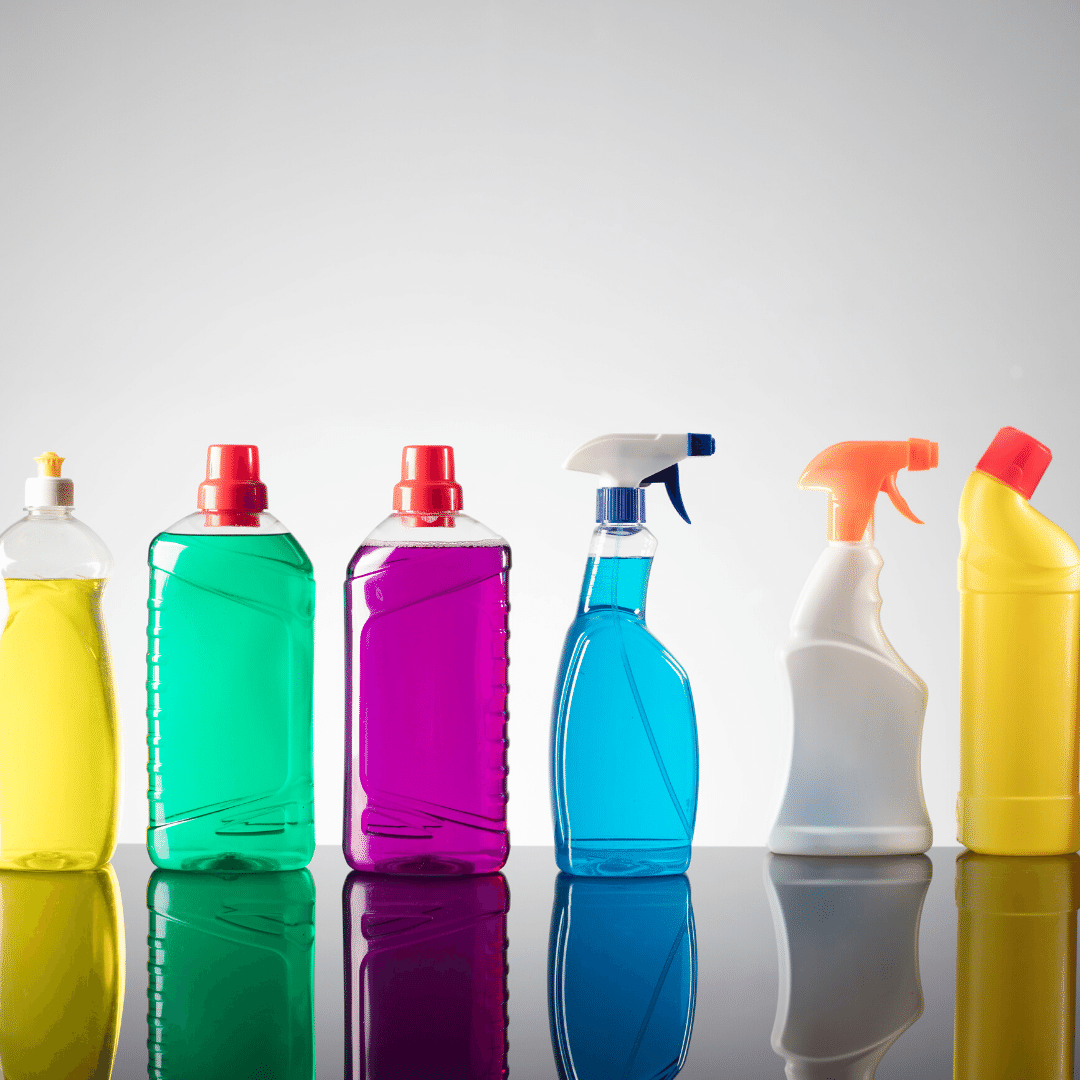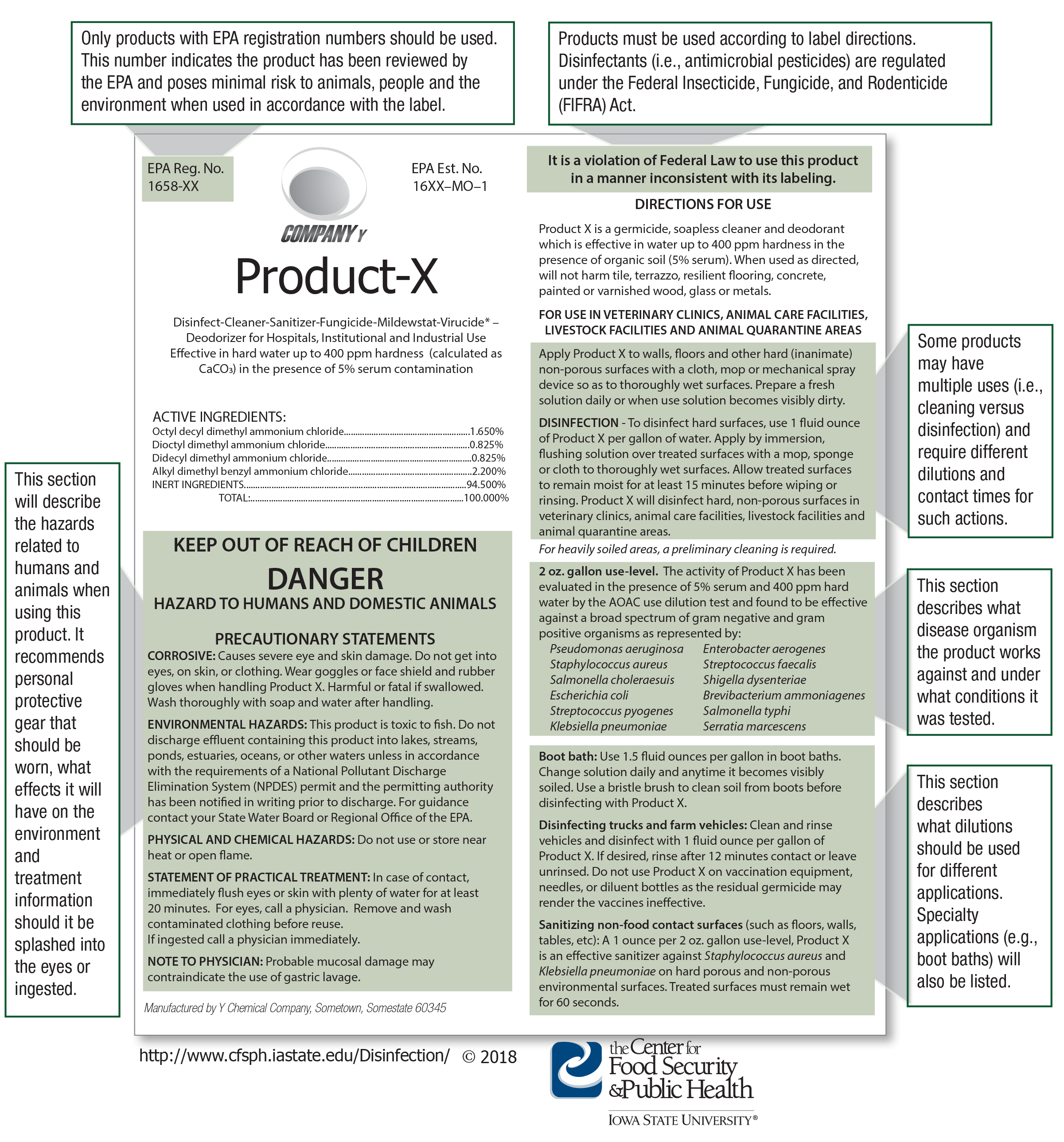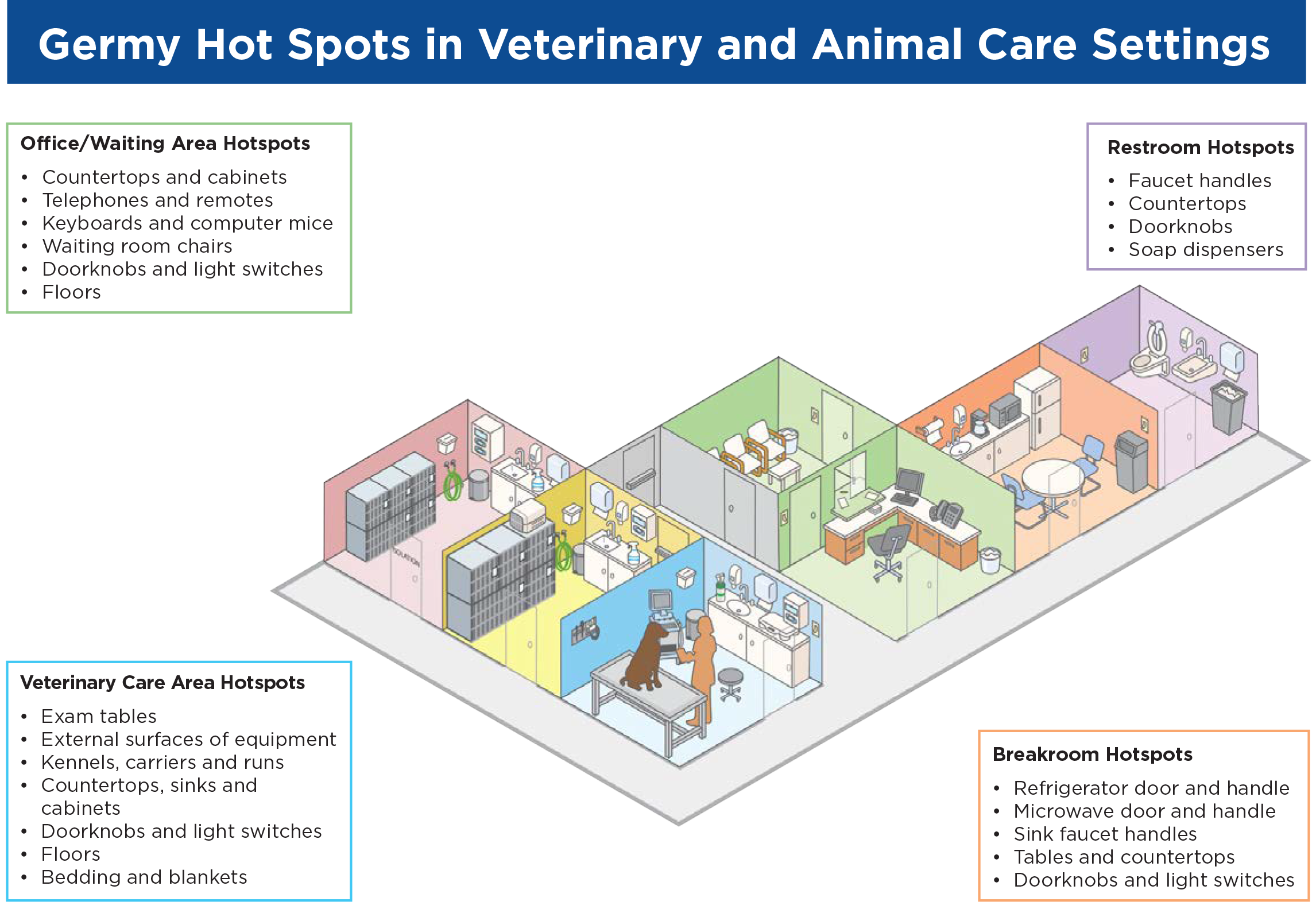 Web Content Viewer
Web Content Viewer
6 Cleaning and Disinfectant Falsities to Wipe Away
Published on 3/11/20

It’s a hot topic in the media when a pandemic occurs, but it should constantly be a hot topic in your veterinary practice - cleaning and disinfecting. We know that we don’t need to explain the importance of cleaning and disinfecting, but we do want to make sure that you know the truth when it comes to HOW to clean and disinfect. We’ve gathered 6 falsities that animal health professionals may believe and countered them with the truth. Take a look!
 Falsity: A cleaner and disinfectant is the same thing.
Falsity: A cleaner and disinfectant is the same thing.
Truth: Let’s get this one out of the way - a cleaner and a disinfectant is not the same thing. You can have both a cleaner and disinfectant in one! However, if you are only using a cleaner or only using a disinfectant, you may not be accomplishing your goals.
A cleaner, such as soap or detergent and water, removes dirt and waste, removing a portion of germs in the process. While cleaning, it’s possible to simply move germs from one surface to another. On the other hand, disinfecting kills germs and keeps them from reproducing. Your process should always be to clean first and then disinfect.
Falsity: Everyone knows how to clean - it’s not that hard.
Truth: There’s cleaning, and then there’s disinfecting. I’m sure you realize that keeping a vet practice disinfected is NOT the same as keeping your house clean. The products are stronger, which may be hazardous if contact is made with skin, and the instructions for proper use may be more complicated. If you don’t read the labels, you might not be effectively using the product, leaving your employees and customers open to bacteria and viruses that you thought you had taken care of.
The below image is from the Center for Food Security and Public Health. Understanding labels is important for the effective control of infectious diseases. Click the image for a PDF that can be printed and posted within your clinic!

Falsity: A disinfectant can be my first and only line of defense.
Truth: We touched on this a bit with the first falsity. If you are using a disinfectant without first washing the area with soap and water, you are doing it wrong. With most disinfectants, you need to clean the surface with soap and water first before you use them. This removes germs and any visible waste particles, such as dirt or pet hair, allowing the disinfectant to most effectively do its job.
The AAHA’s guideline reads: On surfaces, remove loose organic material first, clean with a detergent to remove visible soil, then disinfect using EPA-registered disinfectant.
Falsity: Disinfectants can be wiped up right after being sprayed.
Truth: Most disinfectants do not continue to work after they are dry. What this means is that if you spray a disinfectant and immediately wipe it up, that disinfectant had only a few seconds to do its work at killing bacteria. In fact, most disinfectants need to sit for at least 5 minutes before being wiped away. Be sure to read labels and pay attention to the required contact time.

Falsity: Only the areas where veterinary care is given need to be disinfected.
Truth: 80% of infectious diseases are transmitted by touch. Think of all of the areas that your employees, customers, and furry patients touch. True, it’s vital that you keep exam tables clean, but what about the bottom of the chairs in your waiting room where dogs and cats might hide? What about the break room where your employees touch the refrigerator and microwave door handles? Think about all of your light switches and doorknobs.
Clorox provides a Product Solutions for Veterinary and Animal Care Facilities brochure that lays out all of the germy hot spots that you should keep in mind (see image below).

Image provided by Clorox Healthcare
Check out our offering of Clorox cleaners and disinfectants!
Falsity: A written policy isn’t needed - everyone will follow the rules.
Truth: AAHA’s Infection Control, Prevention and Biosecurity Guidelines state that “every veterinary practice should have a documented ICPB program.” They provide a plethora of guidance on how to create one. Ordered steps are as follows:
- Assign a staff member to oversee and champion the development of an implementation of the ICPB program.
- Identify and develop protocols and checklists. (Examples are provided in the guidelines)
- Perform an initial assessment of the facility to identify strengths and areas for improvement.
- Develop a staff education and training plan.
- Identify a staff member to collect client education materials specifically for use in your practice.
- Develop and implement a surveillance program.
- Establish and maintain a compliance evaluation program.
Expecting your employees to adhere to proper cleaning and disinfecting policies without having a clear policy written down isn’t fair for anyone. A written policy and proper training ensure that all employees know the expectations when it comes to cleaning and disinfecting - this protects your customers, both human and pet, and your employees. Now that’s something to brag about! Let your customers know on social media and in-house that you take your infection control and prevention seriously.
Let’s review! Here are 6 things to know and/or do when it comes to cleaning and disinfecting:
- Cleaning is NOT the same as Disinfecting.
- Read labels for the proper use and handling!
- Clean before you disinfect - unless you have a product that does both.
- Pay attention to contact/dwell times for disinfectants.
- Consider ALL of the areas in your clinic that could come in contact with bacteria/viruses
- Create/maintain a documented infection control, prevention, and biosecurity program.
View our previous blog post on Tips to Keep Your Dental Game Strong in Your Practice!